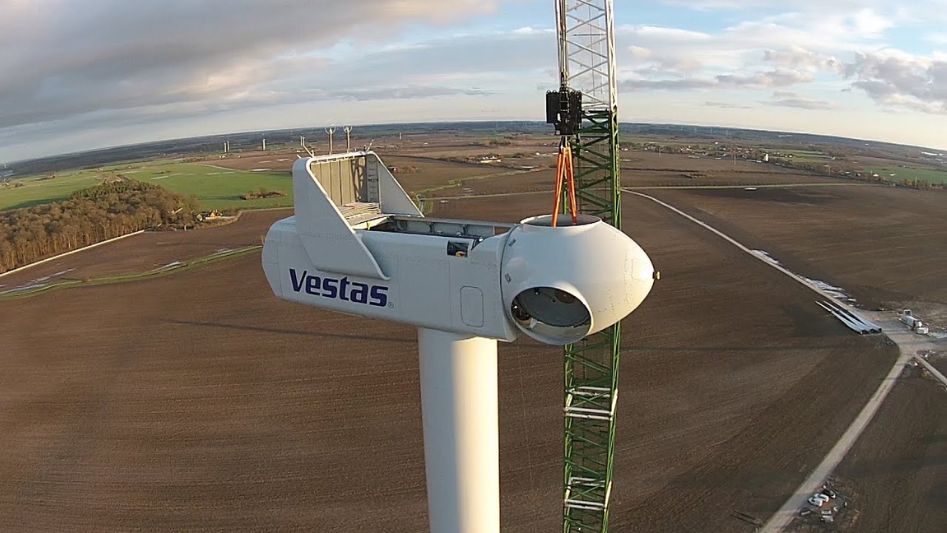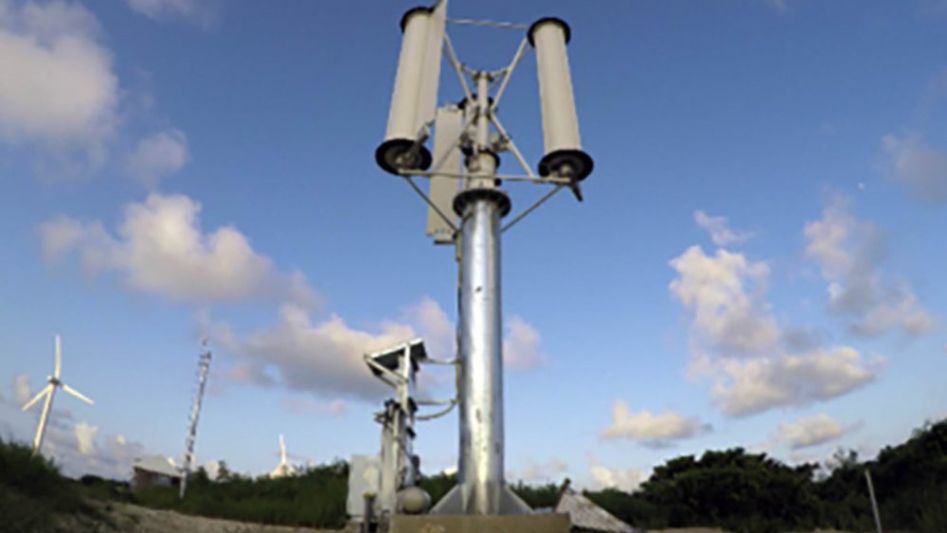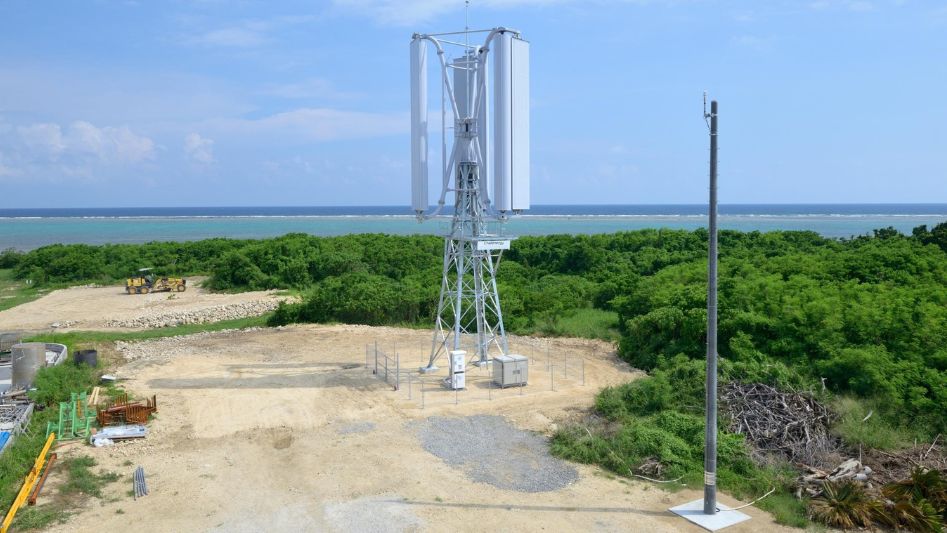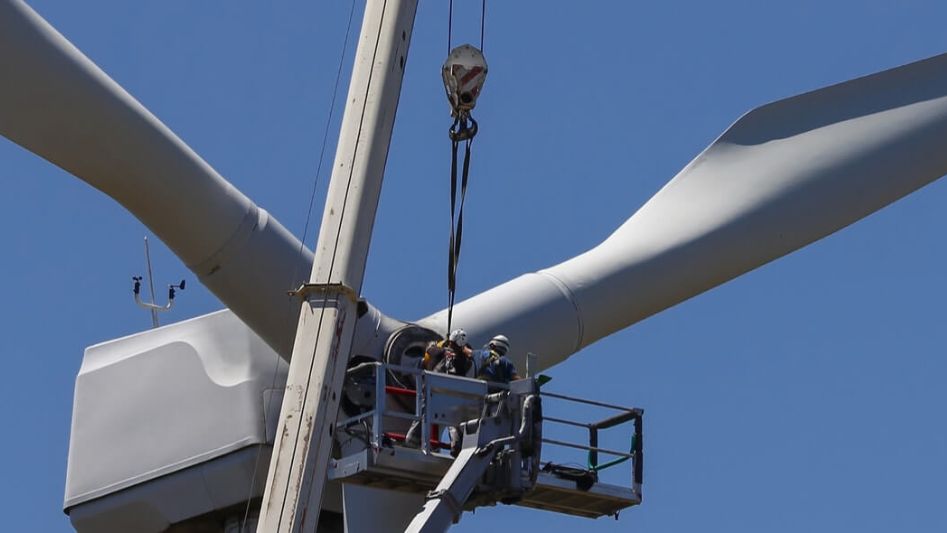Typhoons, also known as hurricanes or cyclones, are severe tropical storms that can cause significant damage to infrastructure, including wind turbines. As wind energy becomes an increasingly important source of renewable energy, it is important to consider the durability and resilience of wind turbines during typhoons. In this article, we will explore the current state of typhoon-resistant wind turbine design, and how innovation is helping to improve the performance and safety of wind turbines during these storms.
Table Of Content
We invite you to read: “Small but Mighty: How Vertical Axis Wind Turbines are Making a Big Impact in Cities”
Stronger and More Flexible Materials
One key innovation in typhoon-resistant wind turbine design is the use of stronger and more flexible materials. Traditional wind turbine blades are made of fiberglass, which can be prone to breaking or bending during extreme weather events. Newer materials, such as carbon fiber and advanced composites, are being developed that are stronger and more flexible, and can better withstand the forces of a typhoon. These materials can help reduce the risk of blade failure, and improve the overall performance of wind turbines during typhoons.
Advanced Sensors and Monitoring Systems
Another innovation in typhoon-resistant wind turbine design is the use of advanced sensors and monitoring systems. These systems can detect and predict wind gusts and other potential hazards, and adjust the orientation of the wind turbine blades to reduce the risk of damage. Sensors can also provide real-time data on the performance and condition of the wind turbine, allowing for timely maintenance and repairs as needed.
We invite you to read: “How To Calculate The Annual Energy Output From A Wind Turbine”
Design Features for Typhoon-Resistance
In addition to stronger materials and advanced sensors, there are also a number of design features that can improve the typhoon-resistance of wind turbines. One example is the use of taller towers, which can help wind turbines withstand stronger winds. Another is the use of taller and longer blades, which can better capture wind energy and reduce the risk of blade failure. Other design features, such as blade pitch control and yaw control, can also help wind turbines adjust to changing wind conditions and reduce the risk of damage.
Maintenance and Planning for Typhoon-Resistant Wind Turbines
Despite the progress that has been made in typhoon-resistant wind turbine design, it is important to note that wind turbines are not immune to damage from extreme weather events. Proper maintenance and planning can play a critical role in ensuring the safety and performance of wind turbines during typhoons. This can include regularly inspecting and servicing wind turbines, as well as developing contingency plans and evacuation procedures in the event of a typhoon.
We invite you to read: “Wind Turbines & Insect Wings: Can We Achieve Higher Efficiency?”
Conclusion
The innovation in typhoon-resistant wind turbine design is truly impressive, and has the potential to revolutionize the renewable energy industry. These advances in materials, sensors, and design features are helping to create wind turbines that are stronger, more flexible, and better able to withstand the forces of a typhoon. These improvements not only increase the safety and performance of wind turbines during extreme weather events, but also have the potential to reduce the risk of downtime and costly repairs. The future of wind energy looks bright, and with the continued advancement of typhoon-resistant wind turbine design, we can look forward to a future of clean, reliable, and sustainable energy
FAQ
What is a typhoon-resistant wind turbine?
A typhoon-resistant wind turbine is a wind turbine that is designed to withstand the strong winds and other hazards associated with typhoons or hurricanes. These wind turbines may use stronger and more flexible materials, advanced sensors and monitoring systems, and various design features to improve their performance and safety during extreme weather events.
How are wind turbines impacted by typhoons?
Wind turbines can be impacted by typhoons in a number of ways, including blade failure, tower collapse, and damage to other components. These events can result in downtime and costly repairs, and can reduce the overall performance and reliability of wind turbines.
What are some innovations in typhoon-resistant wind turbine design?
Innovations in typhoon-resistant wind turbine design include the use of stronger and more flexible materials, such as carbon fiber and advanced composites, advanced sensors and monitoring systems, and various design features, such as taller towers and longer blades. These innovations are helping to improve the performance and safety of wind turbines during typhoons.
How can wind turbines be protected during typhoons?
There are several ways to protect wind turbines during typhoons, including proper maintenance and inspections, and the development of contingency plans and evacuation procedures. The use of typhoon-resistant wind turbine design can also help reduce the risk of damage and downtime during these storms.
You May Also Like
- The Long Road to Vertical Axis Wind Turbines (VAWT)
- Wind Turbines Speed: Are They Supposed to Spin Fast All The Time?
- Can Wind Turbines Withstand Hurricanes?
- What Is A Helical Wind Turbine?
- Windmill vs. Wind Turbine: What’s the Difference?
External Links
- INNOVATION: TYPHOON-PROOF WIND TURBINES
- Innovative Design about Offshore Wind Power Resists the Typhoon
- Typhoon Resistance Analysis of Offshore Wind Turbines: A Review
- Scientists develop wind turbines resistant to hurricanes
- A Typhoon-Proof Wind Turbine Is Generating an Energy Shift for Remote Islands




